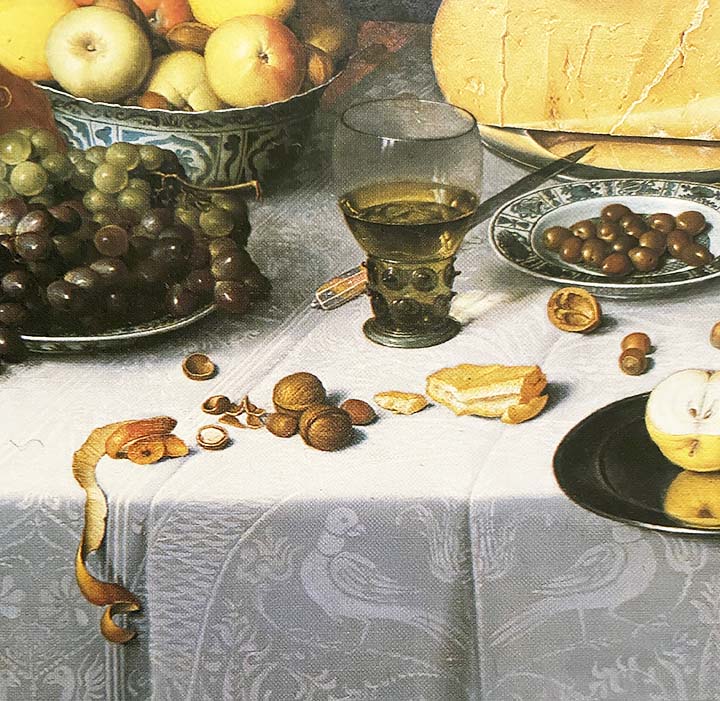
The white cloth in this painting could have been made by the Passchier Lammertijn (born between (3 February and 22 July 1562).
In the sixteenth century, the Flemish city of Kortrijk was the international centre of damask production. During the Tachtigjarige Oorlog, many Flemings fled to the Republic. As a result, the damask industry shifted from Kortrijk to Haarlem.The reason for having table damask woven were special events such as a wedding, an inauguration or battle. One of the Haarlem weavers about whom information is known, is Passchier Lammertijn. Lammertijn supplied damask tablecloths to the elite, including royal families.
In 1603-1615 the Dutch States General bought more than 40,000 Dutch florins’ worth of damask table-linens from Lammertijn to serve as presents for foreign princes and dignitaries. For example, in 1611 840 meters of tablecloth and 2100 napkins were presented to Eleanor of Bourbon-Condé, wife of Prince Philip William of Orange (the son of William of Orange). In 1605 Lammertijn himself presented a damask cloth worth 6,000 florins to the English royal family. Despite the high amounts of money he received for his work, it was difficult for Lammertijn to make ends meet in the long run. He died in 1621 at the age of 59 in Denmark, where he worked in the Royal Silk Weaving Mill.
Detail from: Gedekte tafel met kazen en fruit, Floris van Dijck (1575-1651)
